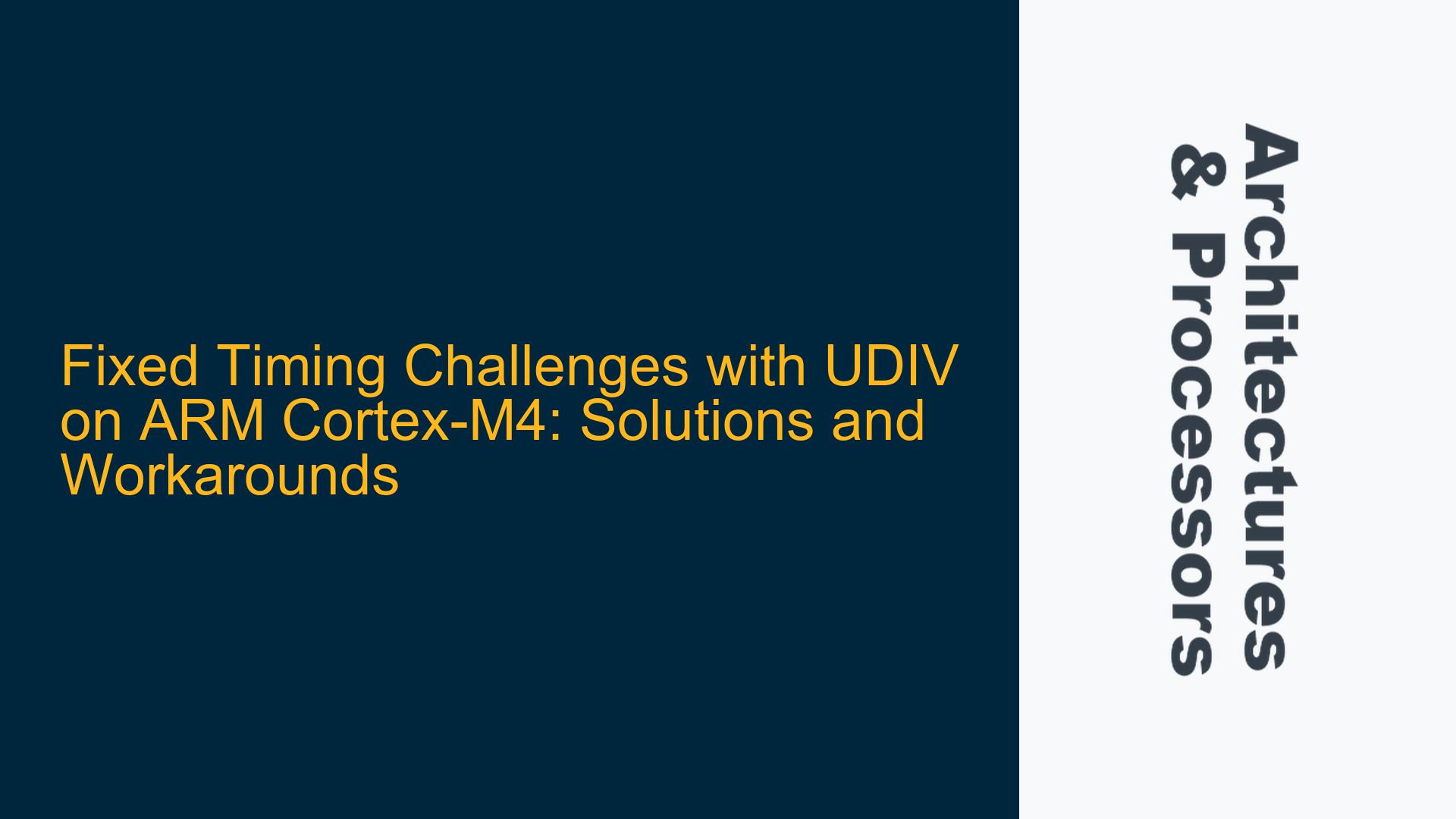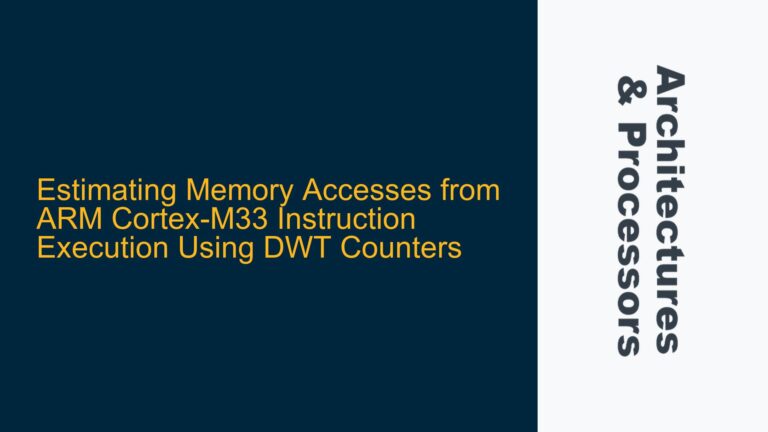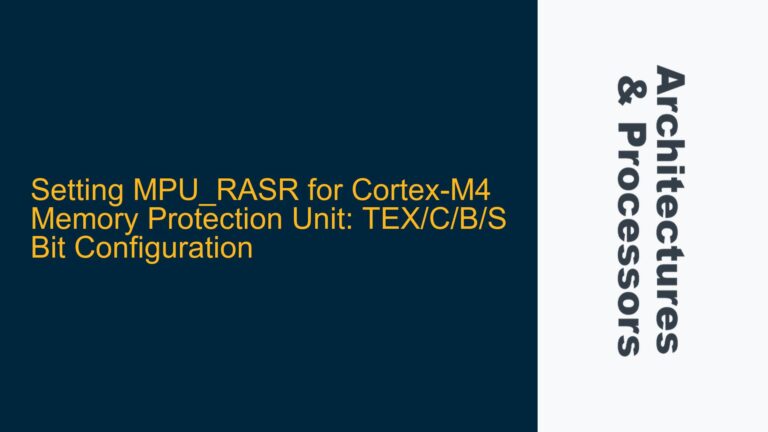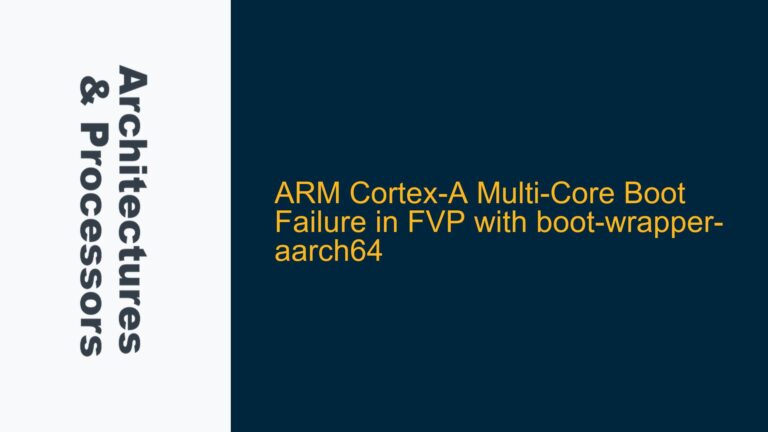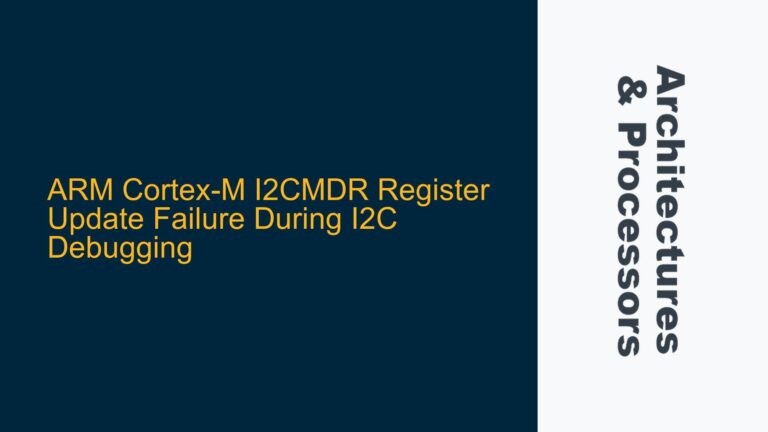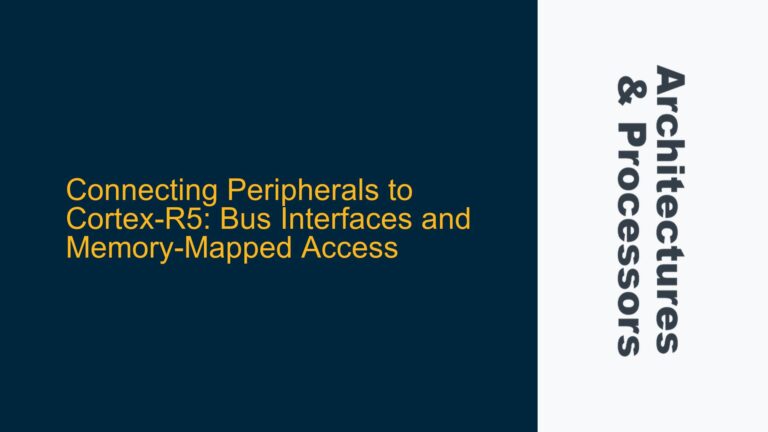Variable Execution Time of UDIV Due to Early Termination Mechanism
The ARM Cortex-M4 processor, like many modern microcontrollers, incorporates a hardware division unit that supports both signed (SDIV) and unsigned (UDIV) integer division. While this feature significantly accelerates division operations compared to software-based implementations, it introduces a critical challenge for developers requiring deterministic execution times. The UDIV instruction’s execution time is not constant; it varies depending on the input operands due to an optimization mechanism known as "early termination."
Early termination is a hardware feature designed to minimize the number of cycles required for division by examining the leading zeros or ones in the input operands. For example, if the numerator has a large number of leading zeros, the division operation can terminate early, reducing the total cycle count. Conversely, operands with fewer leading zeros or ones will result in a longer execution time. This variability is problematic in real-time systems where precise timing is critical, such as in control loops, signal processing, or cryptographic applications.
The Cortex-M4’s UDIV instruction can take between 2 and 12 cycles to complete, depending on the input values. This range is particularly problematic when the numerator is a 16-bit pseudorandom number, as the number of leading zeros can vary significantly. For instance, a numerator with all 16 bits set (0xFFFF) will have no leading zeros, resulting in the maximum execution time, while a numerator with 15 leading zeros (0x0001) will terminate early, leading to a much shorter execution time. This variability makes it difficult to predict and control the exact timing of code segments that rely on division operations.
Impact of Input Operands and Early Termination on UDIV Timing
The variability in UDIV execution time is directly tied to the characteristics of the input operands, particularly the numerator. The ARM Cortex-M4’s division unit uses a iterative algorithm that processes one bit per cycle, but it can skip cycles if the leading bits of the numerator are zeros. This optimization is beneficial for general-purpose computing, where minimizing average execution time is desirable, but it complicates efforts to achieve fixed timing.
For example, consider a scenario where the numerator is a 16-bit value. If the numerator is 0x0001, the division unit will detect 15 leading zeros and terminate early, completing the operation in as few as 2 cycles. On the other hand, if the numerator is 0xFFFF, there are no leading zeros, and the division unit will require the full 12 cycles to complete the operation. This 10-cycle difference can be significant in time-critical applications.
The denominator also plays a role, albeit a less pronounced one. If the denominator has leading zeros, the division unit may still terminate early, but the impact is generally smaller compared to the numerator. This is because the division algorithm primarily focuses on the numerator’s bit pattern to determine the number of iterations required.
In addition to the input operands, the Cortex-M4’s pipeline architecture can further complicate timing predictability. The processor’s ability to execute instructions out of order and its use of branch prediction can introduce additional variability. While these features improve overall performance, they make it challenging to achieve precise timing control, especially when combined with variable-latency instructions like UDIV.
Strategies for Achieving Fixed Timing with UDIV on Cortex-M4
To address the challenges posed by the UDIV instruction’s variable execution time, several strategies can be employed. These approaches range from software-based workarounds to alternative algorithms that avoid division altogether. Each method has its trade-offs in terms of complexity, overhead, and suitability for specific use cases.
1. Floating-Point Division as a Timing-Stable Alternative
One effective solution is to replace the UDIV instruction with floating-point division. The Cortex-M4’s floating-point unit (FPU) provides deterministic execution times for floating-point operations, including division. By casting the integer operands to floating-point values, performing the division, and then casting the result back to an integer, developers can achieve a fixed execution time.
For example, the following code snippet demonstrates this approach:
uint32_t fixed_timing_division(uint32_t numerator, uint32_t denominator) {
float result = (float)numerator / (float)denominator;
return (uint32_t)result;
}
The floating-point division operation on the Cortex-M4 typically takes 14 cycles, regardless of the input values. This fixed timing makes it an attractive option for applications requiring precise timing control. However, this approach introduces additional overhead due to the type conversions and the use of the FPU, which may not be suitable for all applications.
2. Dual Division with Inverted Operands
Another approach, suggested in the discussion, involves performing two division operations: one with the original numerator and another with its bitwise inverse. The idea is that the combined execution time of the two divisions will be approximately constant, as the variability in one operation is offset by the variability in the other.
For example:
uint32_t dual_division(uint32_t numerator, uint32_t denominator) {
uint32_t result1 = numerator / denominator;
uint32_t result2 = ~numerator / denominator;
return result1; // Use result1 as the final result
}
While this method can reduce timing variability, it doubles the computational overhead and may not fully eliminate timing differences, especially if the input operands have extreme values. Additionally, the effectiveness of this approach depends on the specific characteristics of the input data, making it less predictable in some cases.
3. Multiply-by-Reciprocal for Constant Denominators
If the denominator is a constant value, a multiply-by-reciprocal approach can be used to avoid division altogether. This method involves precomputing the reciprocal of the denominator and multiplying it by the numerator to obtain the result. Since multiplication has a fixed execution time on the Cortex-M4, this approach provides deterministic timing.
For example:
uint32_t multiply_by_reciprocal(uint32_t numerator) {
const uint32_t denominator = 10;
const uint32_t reciprocal = 0x1999999A; // 1/10 in fixed-point format
return (numerator * reciprocal) >> 32;
}
This method is highly efficient and provides fixed timing, but it is only applicable when the denominator is known at compile time. Additionally, it requires careful handling of precision and rounding errors, especially for denominators that are not powers of two.
4. Manual Timing Adjustment with NOPs
A more brute-force approach involves measuring the worst-case execution time (WCET) of the UDIV instruction and inserting NOP (no operation) instructions to pad shorter executions to match the WCET. While this method can achieve fixed timing, it is highly inefficient and difficult to implement reliably due to the Cortex-M4’s pipeline architecture.
For example:
uint32_t padded_division(uint32_t numerator, uint32_t denominator) {
uint32_t result = numerator / denominator;
asm volatile("nop"); // Insert NOPs to match WCET
asm volatile("nop");
// Additional NOPs as needed
return result;
}
The main drawback of this approach is that the exact number of NOPs required can vary depending on the processor’s pipeline state and other factors, making it difficult to achieve precise timing control. Additionally, the use of NOPs increases code size and execution time, which may not be acceptable in resource-constrained systems.
5. Disabling Early Termination (Not Supported)
One potential solution that was explored in the discussion is disabling the early termination mechanism to force the UDIV instruction to always take the maximum number of cycles. However, this is not supported by the Cortex-M4 architecture. The early termination feature is hardwired into the division unit and cannot be disabled or configured by software. As a result, developers must rely on alternative methods to achieve fixed timing.
6. Custom Division Algorithm with Fixed Timing
For applications where none of the above methods are suitable, a custom division algorithm with fixed timing can be implemented in software. This approach involves writing a division routine that processes the input operands in a deterministic manner, ensuring that the execution time is constant regardless of the input values.
For example, a simple fixed-timing division algorithm might look like this:
uint32_t fixed_timing_divide(uint32_t numerator, uint32_t denominator) {
uint32_t result = 0;
for (int i = 0; i < 32; i++) {
result <<= 1;
if (numerator >= denominator) {
numerator -= denominator;
result |= 1;
}
numerator <<= 1;
}
return result;
}
This algorithm performs a bitwise long division, ensuring that the execution time is constant by iterating exactly 32 times, regardless of the input values. While this approach provides fixed timing, it is significantly slower than the hardware UDIV instruction and may not be suitable for performance-critical applications.
Conclusion
Achieving fixed timing with the UDIV instruction on the ARM Cortex-M4 is a challenging task due to the early termination mechanism and the variability in input operands. However, several strategies can be employed to address this issue, each with its own trade-offs. Floating-point division offers a straightforward solution with fixed timing but introduces additional overhead. Dual division and multiply-by-reciprocal methods provide alternatives with varying degrees of complexity and applicability. Manual timing adjustment with NOPs is inefficient and unreliable, while custom division algorithms offer fixed timing at the cost of performance.
Ultimately, the choice of method depends on the specific requirements of the application, including timing constraints, performance needs, and resource availability. By carefully evaluating these factors and selecting the most appropriate approach, developers can achieve the desired level of timing predictability in their Cortex-M4-based systems.
